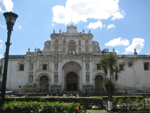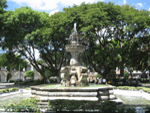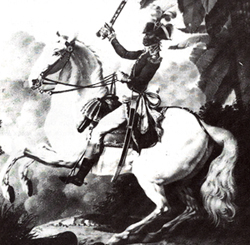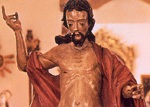Homework #8 |
Q1. |
(A) Compare and contrast what "Sor Filotea" and Sor Juana say about a "quill" and a "pen" in the first paragraph (¶ 1) of each of their documents? (B) How do pens/quills figure in the portraits of Sor Juana? |
Q2. |
What are the sources for the first three Latin quotations in "The Answer"? (Check footnotes 7, 8, 9). What differences do you find in the sources themselves? Why does Sor Juana quote Latin? |
Q3. |
In the Exordium section, in which Sor Juana lays out her method (¶¶ 5, 6 ), she mentions that Moses was a stutterer. (A) What does this fact about Moses have to do with Sor Juana? Then she refers to her intense "inclination toward letters." (B) What does she say she tried to do about this inclination of hers (¶6)? |
Q4. |
Toward the beginning of the Narratio section (her autobiography) she tells us (a) how she learned, (b) what she learned, and (c) what the greatest goal of all learning is. Identify these three things (a, b, c). |
Q5. |
In ¶¶16 and 17 she says some things have caused her grief. Identify some of these things. |
Q6. |
In ¶28, identify what she discovered by observing "nature's secrets." |
Q7. |
In ¶32 Sor Juana arrives at the core of her argument when she analyzes the biblical Latin phrase mulieres in ecclesiis taceant. Explain what the phrase means and why it is so important to Sor Juana. |
Q8. |
What does Sor Juana say about poetry in ¶42? |
Q9. |
Summarize in your own words what Sor Juana says in ¶ 43, which is the conclusion to the Disputatio section. |
Q10. |
In ¶44 Sor Juana returns to the issue that starts her entire dilemma, the Letter Worthy of Athena. While referring to that letter, what does she says about debtors and creditors? What does the Bishop of Puebla have to do with what Sor Juana says in this paragraph (¶44)? |
Q11. |
(A) Identify this church; (B) describe the style in the context of the Latin American colonial period (Renaissance, Baroque, and Neoclassical periods).  |
Q12. |
(A) Identify this fountain and where it is located. (B) Why is it typical of 18th century colonial Latin American humanities? (C) Why does the author of the online textbook say "No comment" concerning the embedded image of this fountain?  |
Q13. |
(A) Identify the figure in this painting. (B) Describe the painting in terms of the Latin American humanities history and styles at the end of the colonial period.  |
Q14. |
(A) Who was Aleijadinho? (B) What did he contribute to Latin American humanities? |
Q15. |
(A) Identify this polychrome statue of Aleijadinho's. (B) What characteristics to you see in it that indicate that it is a major piece of Latin American baroque sculpture and art?  |



